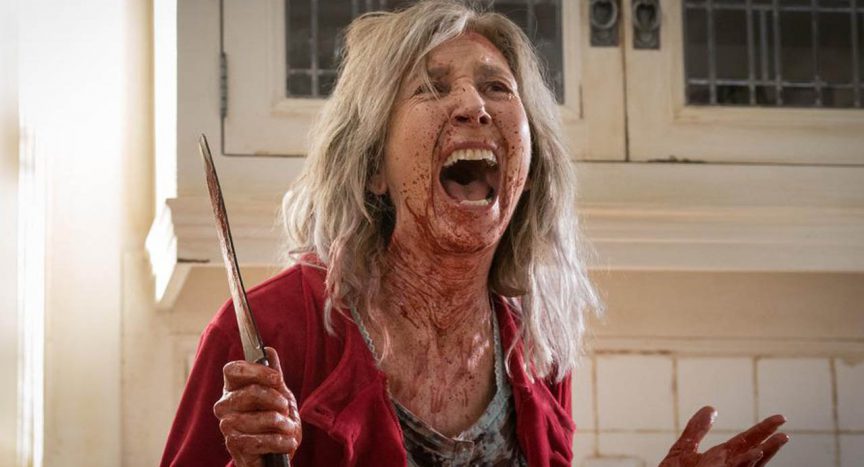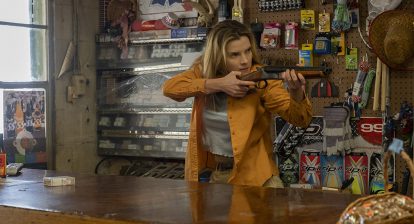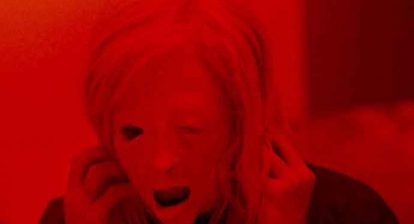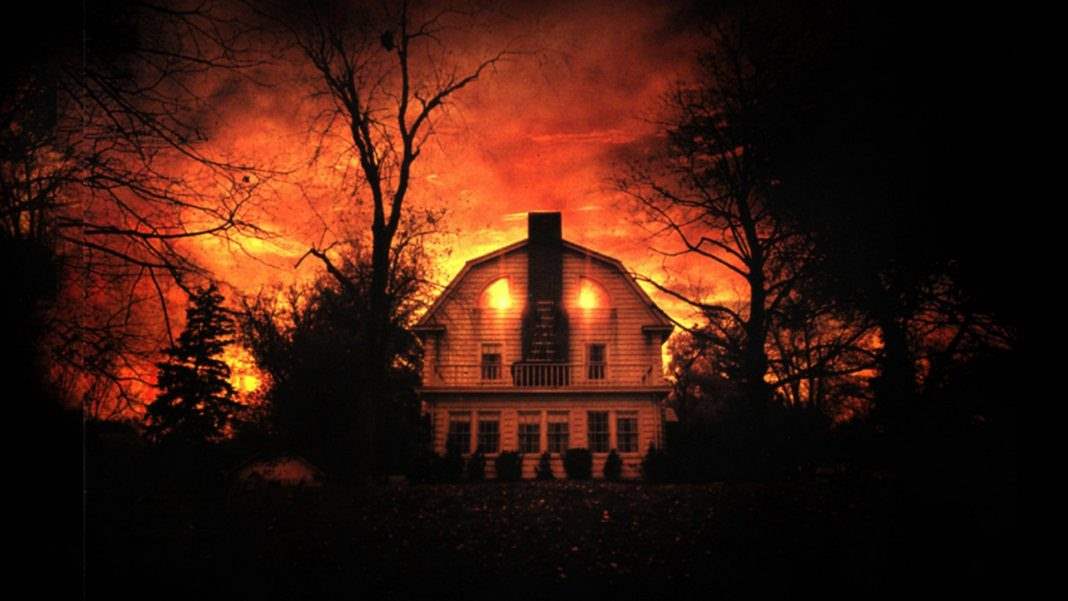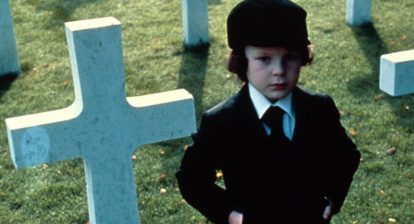The Grudge (2020) opens with some of the worst exposition in recent memory. A woman stands in front of a house resembling the iconic property from the original Japanese-turned-American series and tells someone named Yoko, whom she’s by all accounts familiar with, that she’s been living in Japan for a while now but has to leave immediately and get back to her family even though there are months left in her working contract. It’s a truly baffling choice to kick off a horror movie in 2020.
And then, a load of early-2000s video-game cut-scene style info-graphics explain the central idea of a “grudge” or curse. That’s our introduction to the world of this movie. These choices matter because, aside from the fact they serve as our entry-point to this latest iteration of the Grudge template (a reboot-quel, allegedly, though it feels like neither), they also speak to its utter vapidity. Put simply, this is one of the least competent modern horror movies I’ve seen in quite some time, and I sat through The Curse of La Llorona.
Related: You Won’t Want to Be Buried in This Pet Sematary (2019) [Review]
Depressingly, a cast of skilled and impressively diverse actors are tasked with making sense of the material here, including lead Andrea Riseborough (last seen as the ethereal titular character in Mandy), John Cho, who tried to find his daughter amid an online maze of rumors and lies in the underrated Searching, horror icon Lin Shaye, the always welcome comedic actress Betty Gilpin, The Hateful Eight standout Demián Bichir, and legends Frankie Faison and Jacki Weaver.
Adding to the missed opportunity factor is Nicolas Pesce, serving both behind the camera and as a co-writer with Jeff Buhler (who also co-wrote the ghastly Pet Sematary remake), whose previous films, The Eyes of My Mother and Piercing, announced him as a vital and intriguing new voice in horror. It’s entirely possible he didn’t have as much control over a movie-by-committee like this, but regardless seeing Pesce’s name attached to The Grudge (2020) is disappointing. Knowing he had a hand in writing it is even worse.

Riseborough’s beleaguered cop, Detective Muldoon, is ostensibly the lead. Having lost her husband to cancer, she’s relocated to the district where Bichir’s Goodman (no ranking or first name, according to IMDb) operates. After discovering a burnt out body in a car, their investigation leads them to the spooky house where the grudge is being cultivated (actual, sample line from this movie, delivered by a native English speaker: “That house is GRUDGE”). Goodman refuses to enter but Muldoon crosses the threshold, discovering Shaye’s bloodied loon and unleashing years of evil. Or something.
We don’t know any of these people, we don’t care about any of these people, and we never believe for one moment that any of them are in any real danger. Also, because much of the supposed action takes place in flashback, we already know their fates. There are absolutely no stakes whatsoever. Even when someone perishes, it’s with a shrug rather than a scream because, well, yes these people died because that’s the case the present day cops are investigating. Muldoon flips through pages of evidence related to crimes we’ve already watched unfold onscreen just to drive the point home.
One of the most glaring issues with The Grudge (2020) is how flippantly the movie dispenses with its own rules. Does the curse hop from person to person or is it relegated to this one property? Does it possess people and cause them to commit terrible crimes or operate independently? There’s an attempt at a major shock, which could even generously be called a cliffhanger, right at the end of the movie that makes so little sense in the context of what’s come before it feels like a mistake left over from a previous draft. Making matters worse, the moment attempts the same trick we didn’t fall for in the scene immediately preceding it.
The ghosts, or ghostly creatures, look terrible. A blend of dodgy CGI and bad makeup (this film boasts some of the worst wigs I’ve seen in a mainstream movie in quite some time — justice for Jacki Weaver) ensures that, even though the apparitions make the same noises as those in the source material, they don’t evoke the same feelings of discomfort. True, The Grudge was never as frightening as Ringu — itself only boasting one truly decent scare, at the very end — but the film’s uneasy atmosphere was keenly felt. It’s unclear whether Pesce and his co-writer intended for this to be a straight follow-on or a retooling of that myth but it doesn’t work as either.

At 94 minutes, The Grudge (2020) feels long and drawn out. There’s simultaneously way too much story and not nearly enough. Riseborough throws herself fully into it but, in spite of her demonstrable talent, she can’t sell material this lacking. Muldoon’s son disappears for much of the movie, in spite of their supposed bond (and a wacky game they play together that’s embarrassingly underwritten), only to reappear at the end as an integral part of the story. Likewise, her relationship with Goodman extends to Muldoon calling him up at all hours to yell about a case he’s told her repeatedly he’s uncomfortable discussing. Are they friends? Do they fancy each other? What’s the deal!?
Goodman himself lives in a house decorated with Catholic imagery, with his car dolled up much the same. He makes a fleeting reference to his dead mother and her strong beliefs but, rather than making Goodman’s faith his reasoning for not tussling with evil spirits, instead he tells Muldoon he simply doesn’t believe in them and that’s that. It’s a baffling choice for a character who’s then relegated to the background, where he can look on sadly as Muldoon unravels. A meeting with his ex-partner (in a mental institution!) is, again, bizarrely misjudged and adds absolutely nothing to the story (why couldn’t Goodman have delivered the info?).
See Also: Second Opinion: Child’s Play (2019) is An Insult to Chucky
It’s scattershot, tonally all over the place — attempts at jokes jar maddeningly with the film’s otherwise bleak atmosphere — and yet completely, utterly, deadeningly boring. In spite of everything that’s going on, nothing connects, from that first, fleeting moment in Tokyo to every subsequent non-development back home in the States. Worse, the thing is shot like a made-for-TV Se7en, every scene loaded with malaise and hopelessness, as though Pesce and his team really believed they were making something deep, meaningful, and truly unsettling. Instead, we get a dull, uneventful police procedural with an underdeveloped protagonist whose motivations are never made clear and an utterly unconvincing supernatural element.
Maybe there simply aren’t any stories left to tell in The Grudge universe. Or perhaps modern horror audiences are too accustomed to, as film critic Mark Kermode hilariously put it, the lame “quiet-quiet-FACE” jump scares deployed here. There’s something intensely irritating about a horror movie utilizing the same beat over and over, especially when it didn’t work in the first place, that makes one question the filmmaker’s intentions. Was there just not enough to work with? Was the movie originally intended to be 20 minutes longer? On this evidence, The Grudge well has run dry. Hopefully talented filmmakers like Pesce get the opportunity to make their own stuff rather than relying on retreads going forward as, following Pet Sematary and Child’s Play, this is the third dud in a row.
